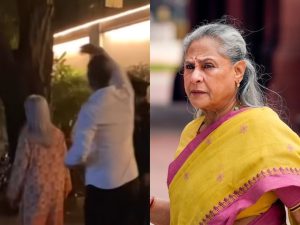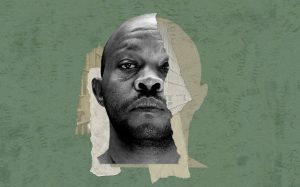
Carolyn Bessette Kennedy never gave an interview. There is an eight-second clip of her leaving a party in 1998 and saying “the entire evening was spectacular,” and a three-second snippet from the next year calling someone “fabulous.” She let her clothes do most of the talking.
Bessette Kennedy, who married John F. Kennedy, Jr. in 1996 and died with him in a plane crash in 1999 at age 33, was one of the most photographed women in the world. A blond fashion publicist for Calvin Klein with understated but haunting, Grant-Wood-does-Picasso features, she found herself reluctantly flung into fame, like Princess Diana the decade before. And like Princess Diana, too, her ensembles are something like tea leaves, hinting at inner thoughts she could or would not express.
But if Diana’s clothes were effusive and verbose — from her playful 1980s knits and dresses to her sleek and sexy ’90s post-divorce wardrobe — Bessette Kennedy’s were muted, enigmatic. Diana equally courted and loathed paparazzi; Bessette Kennedy only loathed them.
Still, images of her have become part of fashion history and the canon of influencer dressing, inspiring designers to embrace the plain white dress shirt, and brands like Sporty and Rich, which recently re-created a series of paparazzi images of Bessette Kennedy for an (unintentionally eerie) ad campaign. Her streetstyle — even if the act of capturing it was perceived by its subject as a violation — is like a boilerplate for any woman who aspires to online admiration. She made sweatpants, flip flops with jeans, and beige look like cool, above-it-all choices, instead of laziness.
We’ve come to understand her as a minimalist dresser — and minimalism, for women younger than 40, is the undisputed look of our times, a way to assert calm and control in a time of chaos. A new book — the first about Bessette Kennedy’s style, which is surprising given her influence — is filled with pictures that will inspire those who look to her for the best way to wear jeans and a tank top. “Carolyn Bessette Kennedy: A Life in Fashion,” by Sunita Kumar Nair, shows how Bessette Kennedy’s wardrobe comprised essentials — there are chapters on “The Shirt,” “The Beige,” “The Dress,” etc. But her style was no act of reduction; it was a decisive embrace of only the most sophisticated and interesting kinds of clothes.
It also reveals the depth of her relationship with fashion in a way that’s been misunderstood by those who seek to embrace it. She knew her designers like a snob — Prada, when it was an intellectual’s alternative to big sexy brands like Yves Saint Laurent and Gucci, and avant-gardists like Yohji Yamamoto and Comme des Garcons.
Her red Prada coat, a designer beauty whose print is modeled after 1960s Formica, is “Prada poetry at its best, a mocking wink on what we consider luxury,” Kumar Nair writes. “Friends of Carolyn’s have often said that she was keen to deflect from her beauty, and the house’s modus operandi was the perfect conduit for her.” Kumar Nair dedicates a whole chapter to coats as a source of power — she quotes Bessette Kennedy as praising “rich girls’ coats — girls who get into cars, get out of them, go into restaurants, and get back into cars.”
Perhaps this is simply the way fashion was understood then, before social media made every brand accessible and a house like Prada could be considered a cult fascination. You could be a connoisseur of luxury, an idea that seems laughable now. Fashion was a smaller world then, and you read magazines and looked at splashy photographs and went into stores to learn about clothes, instead of chasing after the same few trends on social media.
But her clothes also show how she wanted to be looked at. She could be retiring, appearing at times even to want to disappear. (Shortly after their marriage, her husband spoke to the paparazzi outside their home and asked that they grant her more privacy.) But you couldn’t help but see her striking coats, a backward hat yanked over her long unbrushed hair, or fitted black blazer and admire her confidence in her restrained originality. She does not look uptight. Her face may appear serious or worried, but she looks so at ease in her clothes and appearance.
Perhaps clothes were an escape or armor for her, but her attachment to what were then mostly cult designers, especially Comme and Yamamoto, showed how she forged a relationship with fashion that allowed her the rare opportunity to exist on her own terms. She never looked obvious. One of her best-known looks (which she wears in the three-second clip mentioned above) is a black opera coat with a beige ruffle by Yamamoto, whose clothes are often described as protective. They allow obscure glamour — an opera coat, for example, but with a ruffle that seems totally composed, nonfrivolous. She looks like a famous, elegant woman, but one who refuses the accepted uniform.
What you can learn from Bessette Kennedy’s style is not how to wear a coat, or make a T-shirt and khakis look like an incredible outfit. Instead, it is how to develop your sense of self and articulate it through what you wear. Not to chase after the things that everyone else wears, or seek to look the way others do. Instead, your individuality can be a way to find privacy in a world that constantly denies it to you.






